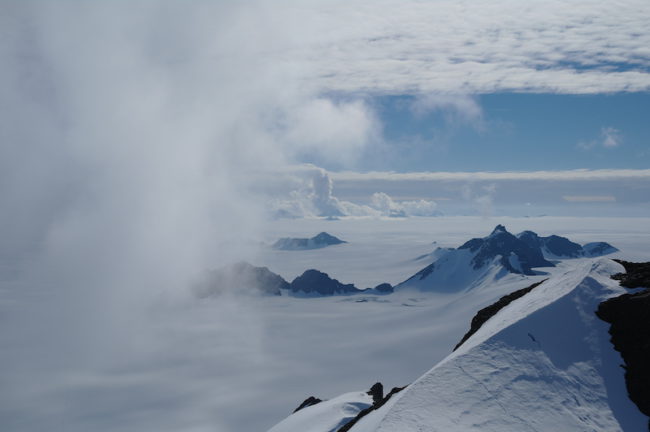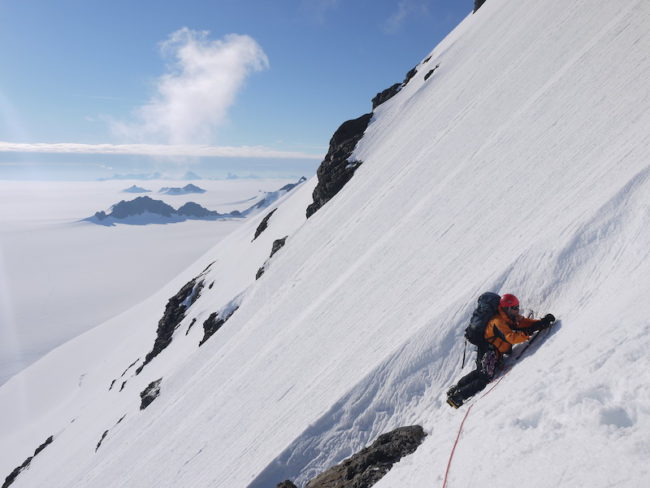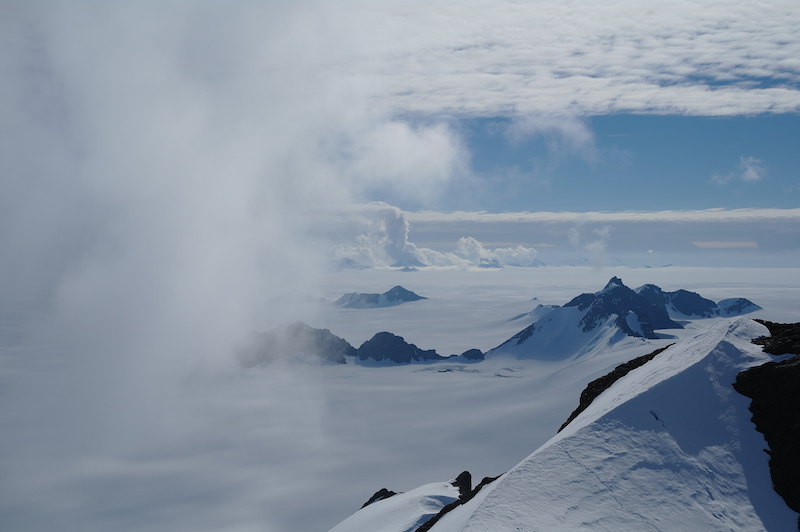
IMBIE is the Ice Sheet Mass Balance Intercomparison Exercise. This is a team of 89 polar scientists from 50 international organisations. They have produced the most complete picture of polar ice sheet loss to date.
On 11th March 2020 they issued a new update.
Findings
The findings, published in two companion articles in Nature, show that Greenland and Antarctica lost 6.4 trillion tonnes of ice between 1992 and 2017 – pushing global sea levels up by 17.8 millimetres. Of the total sea level rise, 10.6 millimetres (60%) was due to Greenland ice losses and 7.2 millimetres (40%) was due to Antarctica.
The combined rate of ice loss has risen by a factor six in just three decades, up from 81 billion tonnes per year in the 1990’s to 475 billion tonnes per year in the 2010’s. This means that the polar ice sheets are now responsible for a third of all sea level rise.
The assessment, led by Professor Andrew Shepherd at the University of Leeds and Dr Erik Ivins at NASA’s Jet Propulsion Laboratory in California, was supported by the European Space Agency (ESA) and the US National Aeronautics and Space Administration (NASA).
In their Fifth Assessment Report, the Intergovernmental Panel on Climate Change (IPCC) predicted that global sea levels will rise 53 centimetres by 2100, and it’s estimated that this would put 360 million people at risk of annual coastal flooding. But the IMBIE Team’s studies shows that ice losses from both Antarctica and Greenland are rising faster than expected, tracking the IPCC’s worst-case (“high-end”) climate warming scenario.
Professor Andrew Shepherd …
“Every centimetre of sea level rise leads to coastal flooding and coastal erosion, disrupting people’s lives around the planet.
“If Antarctica and Greenland continue to track the worst-case climate warming scenario, they will cause an extra 17 centimetres of sea level rise by the end of the century.
“This would mean 400 million people are at risk of annual coastal flooding by 2100. “These are not unlikely events with small impacts; they are already underway and will be devastating for coastal communities.”
Ice Loss
Almost all of the ice lost from Antarctica – and half of that lost from Greenland – has been triggered by oceans melting their outlet glaciers, which causes them to speed up. The remainder of Greenland’s ice losses are due rising air temperature, which has melted the ice sheet at its surface.
Combined losses from both ice sheets peaked at 552 billion tonnes per year in 2010 and averaged 475 billion tonnes per year for the remainder of the decade. The peak loss coincided with several years of intense surface melting in Greenland, and last summer’s Arctic heatwave means that 2019 should set a new record for polar ice sheet loss. Antarctica and Greenland are now losing ice five and seven times faster than they were in the 1990’s, respectively.
Dr Ivins said:
“Satellite observations of polar ice are essential for monitoring and predicting how climate change could affect ice losses and sea level rise.
“While computer simulation allows us to make projections from climate change scenarios, the satellite measurements provide prima facie, rather irrefutable, evidence.
“Our project is a great example of the importance of international collaboration to tackle problems that are global in scale.
Guðfinna Aðalgeirsdóttir, Professor of Glaciology at the University of Iceland and lead author of the Intergovernmental Panel on Climate Change’s sixth assessment report, who was not involved in the study, said:
“The IMBIE Team’s reconciled estimate of Greenland and Antarctic ice loss is timely for the IPCC. Their satellite observations show that both melting and ice discharge from Greenland have increased since observations started.
“The ice caps in Iceland had similar reduction in ice loss in the last two years of their record, but summer 2019 was very warm in this region which resulted in higher mass loss. I would expect a similar increase in Greenland mass loss for 2019.
“It is very important to keep monitoring the big ice sheets to know how much they raise sea level every year.”
ESA’s Director of Earth Observation Programmes, Josef Aschbacher, comments:
“The findings reported by IMBIE demonstrate the fundamental importance of using satellites to monitor the evolution of ice sheets, and for evaluating models used to predict the effects of climate change.”
Further Reading
The 2 Papers
The paper ‘Mass balance of the Greenland Ice Sheet from 1992-2018’ by the IMBIE Team, is published in Nature on 11th March 2020 and can be read at https://rdcu.be/b2pCG This paper reflects the most up to date findings of Greenland ice loses from the Ice Sheet Mass Balance Intercomparison Exercise (IMBIE) Team.
The companion paper ‘Mass balance of the Antarctic Ice Sheet from 1992-2017’ by the IMBIE Team, was published in Nature on 13th June 2018 and can be read at https://rdcu.be/97CE

The Movie
If you want to skip the book (the research papers) and simply watch the movie, then here you go.
The following video was created to accompany the scientific research paper ‘Mass Balance of the Greenland Ice Sheets from 1992 to 2018: The Ice Sheet Mass Balance Inter-comparison Exercise’. Andrew Shepheard. for Nature Research Journal 2019
